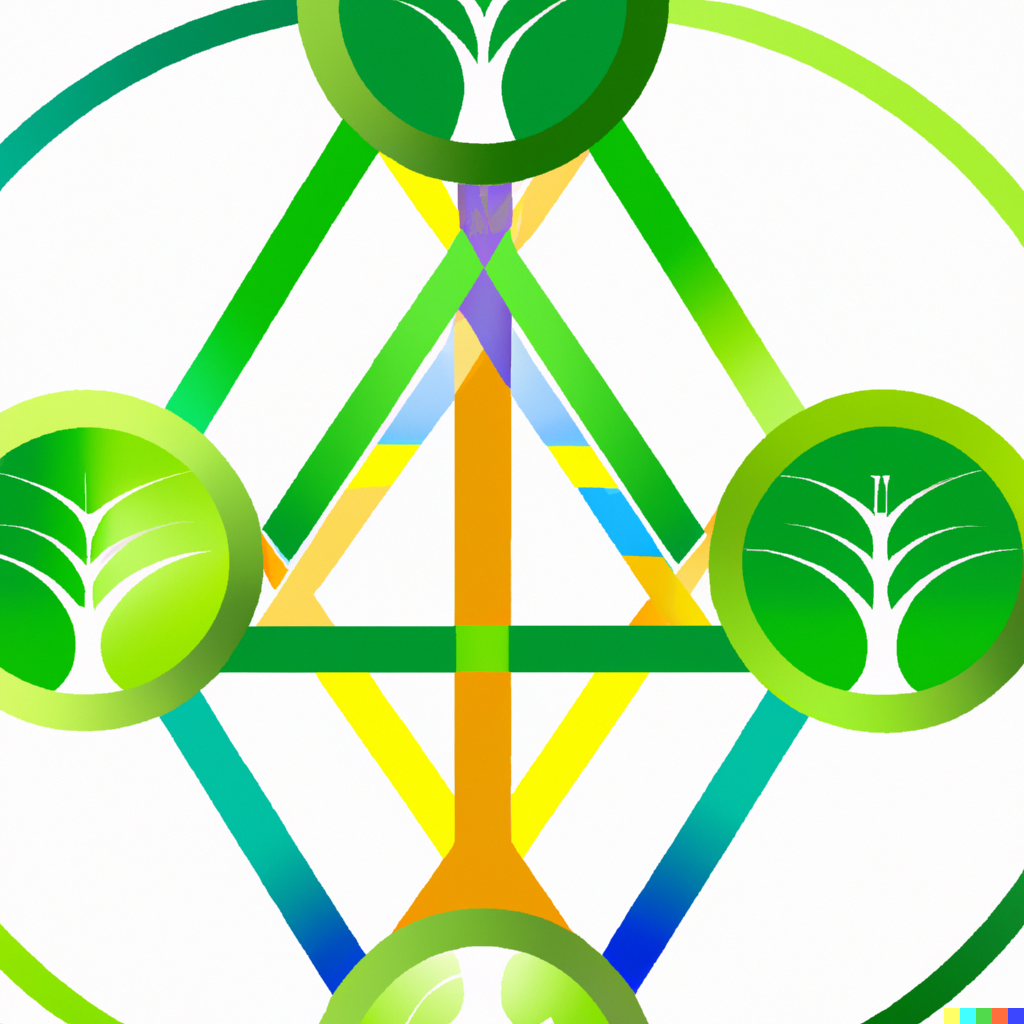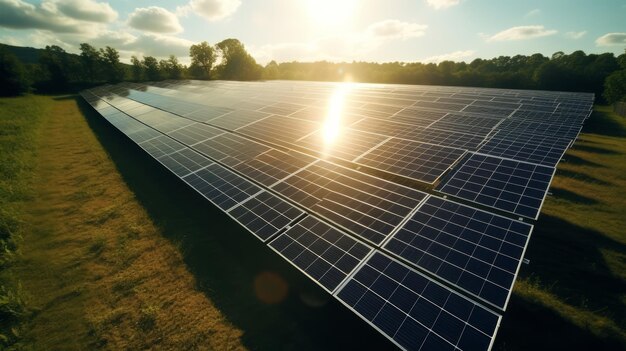
Defining the Circular Economy: Beyond Reduce, Reuse, Recycle
The planet is facing an undeniable challenge. From overflowing landfills to dwindling natural resources and the pressing climate crisis, our current way of "doing business" is unsustainable. For decades, the mantra for environmental responsibility has been "Reduce, Reuse, Recycle." While these three Rs are undeniably important steps, they represent only a fraction of the solution needed to build a truly sustainable future.
Enter the Circular Economy – a revolutionary concept that goes far beyond simply managing waste. It’s a complete rethinking of how we design, produce, use, and ultimately manage products and materials, aiming to eliminate waste and pollution by design, keep products and materials in use, and regenerate natural systems.
In this comprehensive guide, we’ll dive deep into the meaning of the Circular Economy, exploring its core principles, strategies, and the immense benefits it offers. Get ready to discover a future where waste is a design flaw, not an inevitable outcome.
The Linear Economy: The Root of the Problem
To truly grasp the power of the Circular Economy, it’s essential to understand the system it seeks to replace: the Linear Economy. This is the dominant economic model we operate under today, characterized by a simple, one-way flow of materials:
- Take: We extract raw materials from the Earth (minerals, oil, timber, etc.).
- Make: These materials are manufactured into products.
- Dispose: After use, products are discarded, often ending up in landfills or incinerators.
The Consequences of the Linear Model:
- Resource Depletion: We’re consuming finite resources at an alarming rate.
- Environmental Pollution: Manufacturing processes, transportation, and waste disposal all contribute to air, water, and soil pollution.
- Waste Crisis: Landfills are overflowing, and the sheer volume of waste is a global challenge.
- Economic Instability: Reliance on fluctuating raw material prices and vulnerability to supply chain disruptions.
- Loss of Value: Valuable materials are permanently lost once a product is discarded.
The 3 Rs: A Good Start, But Not the Whole Story
"Reduce, Reuse, Recycle" became a popular and important framework for individuals and businesses trying to lessen their environmental impact.
- Reduce: Using less stuff in the first place (e.g., buying fewer single-use items).
- Reuse: Using items multiple times for the same or a different purpose (e.g., refilling a water bottle).
- Recycle: Processing used materials into new products to prevent waste (e.g., turning plastic bottles into new plastic products).
Why the 3 Rs Aren’t Enough for a Truly Circular System:
While vital, the 3 Rs often operate within the existing linear framework and have limitations:
- "Recycling" isn’t always truly circular: Many materials are "downcycled," meaning they are turned into lower-quality products (e.g., plastic bottles into park benches), making it harder to re-recycle them. True circularity aims for "upcycling" or maintaining material quality.
- Focus on End-of-Life: The 3 Rs primarily address what happens after a product has been used. The Circular Economy starts much earlier, at the design phase.
- Doesn’t Eliminate Waste by Design: Even with good recycling, waste is still being managed rather than eliminated from the system from the outset.
- Limited Scope: They don’t inherently promote new business models like "product-as-a-service" or regenerative practices that benefit natural systems.
Think of it this way: The 3 Rs are like trying to manage the symptoms of a cold. The Circular Economy is like boosting your immune system so you don’t get sick in the first place.
Defining the Circular Economy: A Systemic Shift
At its core, the Circular Economy is an economic model where we design out waste and pollution, keep products and materials in use, and regenerate natural systems. It’s a holistic approach that fundamentally changes our relationship with resources.
The Ellen MacArthur Foundation, a leading voice in promoting the Circular Economy, outlines three key principles:
-
Design out waste and pollution:
- What it means: From the very beginning, when a product is conceived, designers think about its entire lifecycle. They choose materials that are safe, durable, and can be easily disassembled, repaired, reused, or recycled without losing quality. They also design processes that minimize or eliminate harmful emissions.
- Beyond the 3 Rs: This is about prevention. Instead of dealing with waste after it’s created, you design it out of existence. Imagine a phone designed so every component can be easily removed, updated, or repurposed.
-
Keep products and materials in use:
- What it means: This principle focuses on extending the lifespan of products and components for as long as possible. When a product can no longer be used in its original form, its materials are recovered and circulated back into the economy at their highest value. This involves strategies like repair, reuse, remanufacturing, and high-quality recycling.
- Beyond the 3 Rs: It’s not just about using something again; it’s about maintaining its value. If a washing machine breaks, the goal isn’t just to recycle its metal (which often downgrades the material) but to repair it, upgrade it, or take back its components to build a "new" one.
-
Regenerate natural systems:
- What it means: This principle goes beyond simply doing less harm; it aims to actively improve and restore natural ecosystems. This includes returning valuable biological materials (like food waste) to the soil to enrich it, promoting biodiversity, and using renewable energy sources.
- Beyond the 3 Rs: While the 3 Rs focus on reducing negative impact, regeneration focuses on creating a positive impact. It’s about agriculture that builds soil health, industries powered by clean energy, and products that enrich the environment at the end of their life.
In essence, the Circular Economy aims to decouple economic growth from the consumption of finite resources. It’s about creating a truly restorative and regenerative system.
Key Pillars and Strategies of the Circular Economy
Moving from theory to practice, the Circular Economy employs a range of strategies and approaches:
-
Eco-Design / Design for Circularity:
- Concept: Products are designed from the ground up for longevity, durability, easy repair, disassembly, and material recovery. This means choosing non-toxic, recyclable, or compostable materials.
- Example: Modular smartphones where individual components (camera, battery) can be easily swapped out for upgrades or repairs, extending the phone’s life.
-
Longevity & Durability:
- Concept: Making products that last longer through robust design, quality materials, and timeless aesthetics.
- Example: High-quality clothing made to last for years, rather than fast fashion designed for a few wears.
-
Repair & Maintenance:
- Concept: Ensuring products can be easily fixed when they break. This includes providing spare parts, repair manuals, and accessible repair services.
- Example: Companies offering repair services for their electronics, or community "repair cafes" where people can get help fixing broken items.
-
Reuse & Redistribution:
- Concept: Giving products a second, third, or even fourth life in their original form. This includes second-hand markets, charitable donations, and platforms for swapping or lending.
- Example: Refurbished electronics, thrift stores, or returnable packaging systems for beverages.
-
Remanufacturing & Refurbishment:
- Concept: Bringing used products back to "like-new" or better condition through industrial processes. Remanufacturing often involves disassembling a product, cleaning, inspecting, and replacing worn parts.
- Example: Car parts (engines, transmissions) that are remanufactured and sold with a warranty, often at a lower cost than new parts.
-
Recycling (High-Quality & Closed-Loop):
- Concept: While a last resort in the circular hierarchy, high-quality recycling is crucial when other strategies aren’t feasible. The goal is to keep materials in a "closed loop," meaning they retain their value and can be recycled indefinitely without degradation.
- Example: Aluminium cans being recycled into new aluminium cans, maintaining their material properties.
-
New Business Models:
- Product-as-a-Service (PaaS): Customers pay for the use of a product, not its ownership. The manufacturer retains ownership, incentivizing them to design for durability, repair, and eventual take-back.
- Example: Paying a monthly fee for lighting (Philips), tires (Michelin), or clothing (rental services).
- Sharing Economy: Platforms that enable people to share access to products, reducing the need for individual ownership.
- Example: Car-sharing services, tool libraries.
- Product-as-a-Service (PaaS): Customers pay for the use of a product, not its ownership. The manufacturer retains ownership, incentivizing them to design for durability, repair, and eventual take-back.
-
Cascading Use:
- Concept: Using materials for different purposes, often of decreasing quality, until they can no longer be used.
- Example: Timber used for furniture, then for chipboard, then finally for energy recovery.
The Benefits of Embracing the Circular Economy
The shift to a Circular Economy isn’t just about environmental protection; it offers a multitude of benefits for businesses, individuals, and society as a whole:
-
Environmental Benefits:
- Reduced Waste & Pollution: Significantly less material sent to landfills or incinerators.
- Lower Carbon Emissions: Reduced energy consumption from new material extraction and manufacturing, and less waste processing.
- Preservation of Natural Resources: Less reliance on virgin materials, protecting ecosystems and biodiversity.
- Regenerated Ecosystems: Active restoration of soil health, water cycles, and biodiversity.
-
Economic Benefits:
- New Business Opportunities: Growth in repair services, remanufacturing, reverse logistics, and innovative product-as-a-service models.
- Increased Resource Security: Less reliance on volatile global commodity markets, as materials are kept in circulation.
- Cost Savings: Reduced costs for waste disposal and potentially lower raw material expenses.
- Innovation & Job Creation: Drives innovation in design, technology, and service delivery, creating new green jobs.
- Enhanced Competitiveness: Businesses can differentiate themselves and build stronger customer relationships through sustainable practices.
-
Social Benefits:
- Improved Public Health: Less pollution means cleaner air and water.
- Stronger Communities: Local repair services and sharing initiatives can foster community engagement.
- Empowered Consumers: Access to more durable, repairable, and affordable products.
- Greater Resilience: Economies become more resilient to resource shocks and supply chain disruptions.
Challenges and the Path Forward
Transitioning to a Circular Economy is a monumental task, and it comes with its challenges:
- Mindset Shift: Moving away from a "take-make-dispose" mentality requires a fundamental change in how businesses operate and how consumers think about ownership.
- Infrastructure Investment: Building the necessary collection, sorting, processing, and remanufacturing infrastructure requires significant investment.
- Policy & Regulation: Governments need to create supportive policies, incentives, and regulations that encourage circular practices and disincentivize linear ones.
- Complexity: Designing for circularity can be more complex initially, requiring new skills and collaboration across supply chains.
- Consumer Behavior: Encouraging consumers to embrace repair, reuse, and new ownership models (like product-as-a-service) requires education and convenience.
Despite these hurdles, the momentum towards a Circular Economy is growing. Businesses, governments, and individuals are increasingly recognizing that it’s not just an environmental imperative, but a powerful economic opportunity.
How You Can Contribute to the Circular Economy
The Circular Economy is a collective effort. Here’s how you can play your part:
-
Be a Conscious Consumer:
- Buy Less, Buy Better: Prioritize quality, durable products over cheap, disposable ones.
- Choose Circular Brands: Support companies that design for durability, offer repair services, or have take-back programs.
- Embrace Second-Hand: Shop at thrift stores, use online marketplaces, and consider refurbished items.
- Rent or Borrow: For items you don’t use frequently (e.g., power tools, special occasion clothing), consider renting or borrowing instead of buying.
- Repair Before Replacing: Look for repair services, learn basic DIY fixes, or visit a repair café.
- Support Product-as-a-Service: Explore subscription models for things like lighting, appliances, or even clothes.
-
Reduce Food Waste: Plan meals, store food properly, compost food scraps, and support initiatives that rescue surplus food.
-
Advocate & Learn:
- Talk to friends and family about the Circular Economy.
- Support policies that promote circularity (e.g., extended producer responsibility).
- Educate yourself further by following organizations like the Ellen MacArthur Foundation.
Conclusion: Building a Regenerative Future
The Circular Economy represents a fundamental paradigm shift – a move from an extractive, wasteful system to one that is restorative and regenerative by design. It’s about reimagining our entire economy, not just tweaking the edges. While "Reduce, Reuse, Recycle" laid important groundwork, the Circular Economy offers a far more ambitious and ultimately necessary blueprint for a truly sustainable and prosperous future.
By embracing its core principles – designing out waste and pollution, keeping products and materials in use, and regenerating natural systems – we can create an economy that thrives within the planet’s boundaries, ensuring a healthier and more resilient world for generations to come. The future is circular, and it’s being built, one mindful design, one extended product life, and one regenerated ecosystem at a time.
Frequently Asked Questions (FAQs) about the Circular Economy
Q1: Is the Circular Economy just another name for sustainability?
A1: While closely related, they’re not identical. Sustainability is a broad goal of meeting current needs without compromising future generations. The Circular Economy is a specific framework and economic model for achieving sustainability, particularly concerning resource use and waste.
Q2: How is the Circular Economy different from traditional recycling?
A2: Traditional recycling is an end-of-pipe solution that often leads to "downcycling" (materials losing quality). The Circular Economy integrates recycling as a last resort, but primarily focuses on "designing out" waste, extending product life, and keeping materials at their highest value through strategies like repair, reuse, and remanufacturing.
Q3: What are some real-world examples of the Circular Economy in action?
A3:
- Philips’ "Light as a Service": Customers pay for the light, not the bulb, incentivizing Philips to make long-lasting, repairable lighting systems.
- Patagonia’s Worn Wear program: Encourages customers to repair, reuse, and recycle their clothing, offering repair services and a platform for second-hand sales.
- Loop: A platform that partners with brands to deliver products in durable, reusable packaging that is collected, cleaned, and refilled.
- Michelin’s "Tire as a Service": For fleet owners, Michelin provides tire services rather than just selling tires, taking responsibility for maintenance and end-of-life.
Q4: Is the Circular Economy only for big businesses?
A4: No, businesses of all sizes, from startups to SMEs and large corporations, can adopt circular principles. Individuals also play a crucial role through conscious consumption choices. Many local initiatives, like repair cafes or community composting programs, are excellent examples of grassroots circularity.
Q5: How can consumers encourage more businesses to adopt circular practices?
A5:
- Vote with your wallet: Choose products and services from companies that demonstrate circular practices.
- Demand transparency: Ask companies about their materials, production processes, and end-of-life plans for their products.
- Provide feedback: Let businesses know you value durability, repairability, and take-back programs.
- Support advocacy groups: Join or support organizations working to promote circular policies and business models.



Post Comment